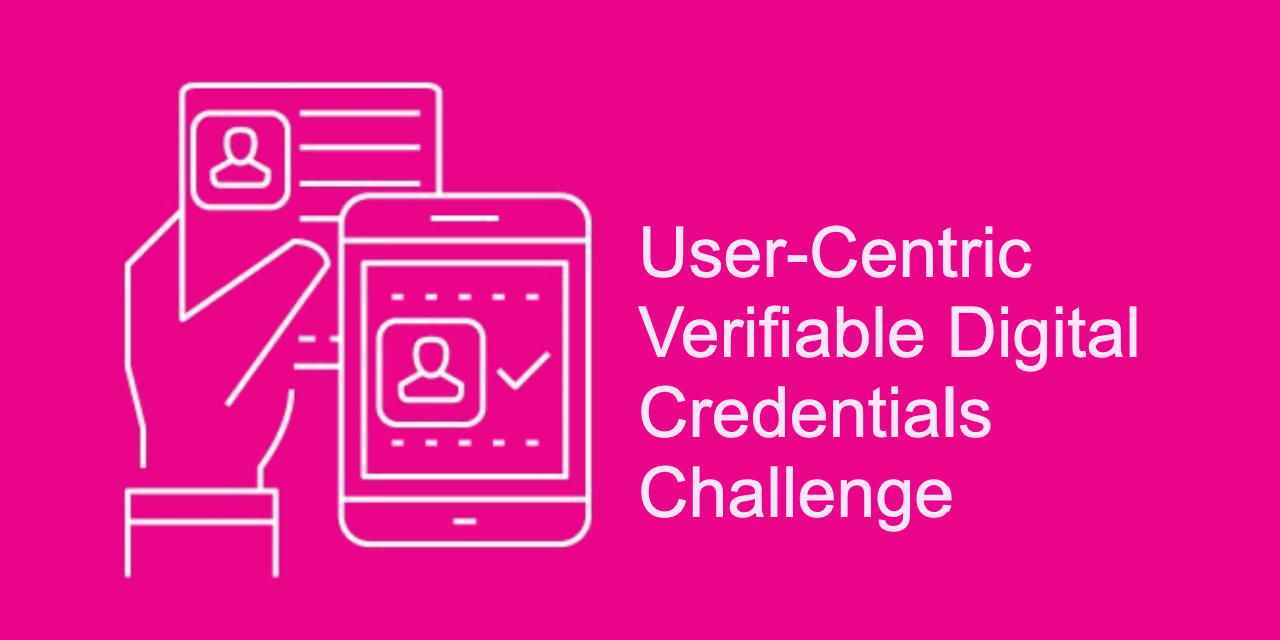| Vendor |
Use Cases |
|
Bluink
|
Appending a Security Clearance to a Government Worker Digital Identity
interoperability of third party identity claims (Security Clearance)
The understanding of the challenge response is summarized from the proposal as follows:
- Demonstrate eID-Me interoperability with Decentralized Identifiers (DIDs), WC3 Verifiable Credentials, and JSON-LD specifications. This capability currently does not exist within the eID-Me solution and it is considered at TRL1 with respect to this technology.
- Incorporate a mobile, portable, decentralized security clearance check into an existing digital identity. Demonstrate interoperability of third-party identity claims (Security Clearance) and interaction with non-human endpoints (IoT devices), such as unlocking an automated vehicle or retrieving a package from a secure parcel box.
|
|
Aviary Tech
|
Issuance and Verification of Credentials for the Purposes of Cannabis-Related Interactions
The understanding of the challenge response is summarized from the proposal as follows:
- Demonstrate how cannabis licensees can use their government issued verifiable credentials to coordinate directly with the federal supply chain, rather than relying on the many integrations currently required. Federal producers can trust credentials are granted by provincial/territorial authorities and sell product directly to licensees.
- Demonstrate a digital credential issuance and verification Software as a Service (SaaS). Program and service delivery managers accept trusted digital identities as an alternative to in-person interactions by using a simple interface to configure verifying agents to request sufficient and appropriate attributes to uniquely identify individuals.
|
|
SecureKey
|
Opening a Bank Account for Businesses or Individuals
The understanding of the challenge response is summarized from the proposal as follows:
- Enable users to share verified data from trusted partners including banks, telcos, insurance, and credit agencies. Issuing organizations will be able to create official digital credentials. Recipients of these credentials may store these documents autonomously in any Holder-wallet application they choose and will be able to prove to Verifiers their ownership, entitlement, and source of the credential.
- Demonstrate interoperability and portability where no direct integration is required between parties. Issuers and Recipients may migrate between backing technological solutions independently keeping their ownership credentials without impacting Verifiers or requiring collaboration between parties and be processed by standards compliant software solutions.
|
|
TerraHub
|
Rapidly Verify an Individual’s Ability to Perform a Job or Enter a Site without the Need for 3rd Party Verification
The understanding of the challenge response is summarized from the proposal as follows:
- Independently, cryptographically and rapidly verify an individual’s ability to perform a job or enter a site without the need for 3rd party verification. Provide instant worker credential verification for all relevant actors and authorities where operations span multiple geographical and organizational boundaries.
- Provide the individual re-certification options based on expiry, geography and specific site needs and support fit for duty, fast check-ins and safe operations.
|
|
TrustScience
|
Illustration of how a Decentralized Record of Employment System could be Implemented for Employment Verification
The understanding of the challenge response is summarized from the proposal as follows:
- Demonstrate how a set of credentials containing the information (e.g., time of hiring, time of termination, employer, employer id, citizen id) along with the metadata are managed in a wallet controlled by a citizen and also be stored by the employer to be transmitted to the Canadian government. This includes a protocol negotiation and a query language that will help search and provide attributes, credentials, and lineage of credentials for whatever query the verifier might have.
- Demonstrate a simple interface shareable between an entity like the “Government of Canada” and the issuing “employers”. When an employer onboards to the system, they will receive a key or keys from the government that they will use to sign credentials using the employer’s authority but trusted through the use of issuer (e.g., government) signing keys.
|
|
2Keys
|
Creation of a Foundational Identity (i.e., digital birth certificate) for the Purposes of Enabling Individual Enrolment into Programs and Services
The understanding of the challenge response is summarized from the proposal as follows:
- Demonstrate how issuers of evidence of foundational identity (birth certificates or permanent resident cards) can issue a digital equivalent (verifiable credential) that supports enrolment and delegation processes using verifiable credentials and supports an omni-channel approach to allow a user to present verifiable credentials online or in-person with the ability to cryptographically verify the provenance of the credentials whether connected or offline.
- Demonstrate using open industry standards to provide autonomy to users and issuers allowing them to switch vendors and identity networks without impacting their ability to transact online and in-person whether connected or offline.
|
